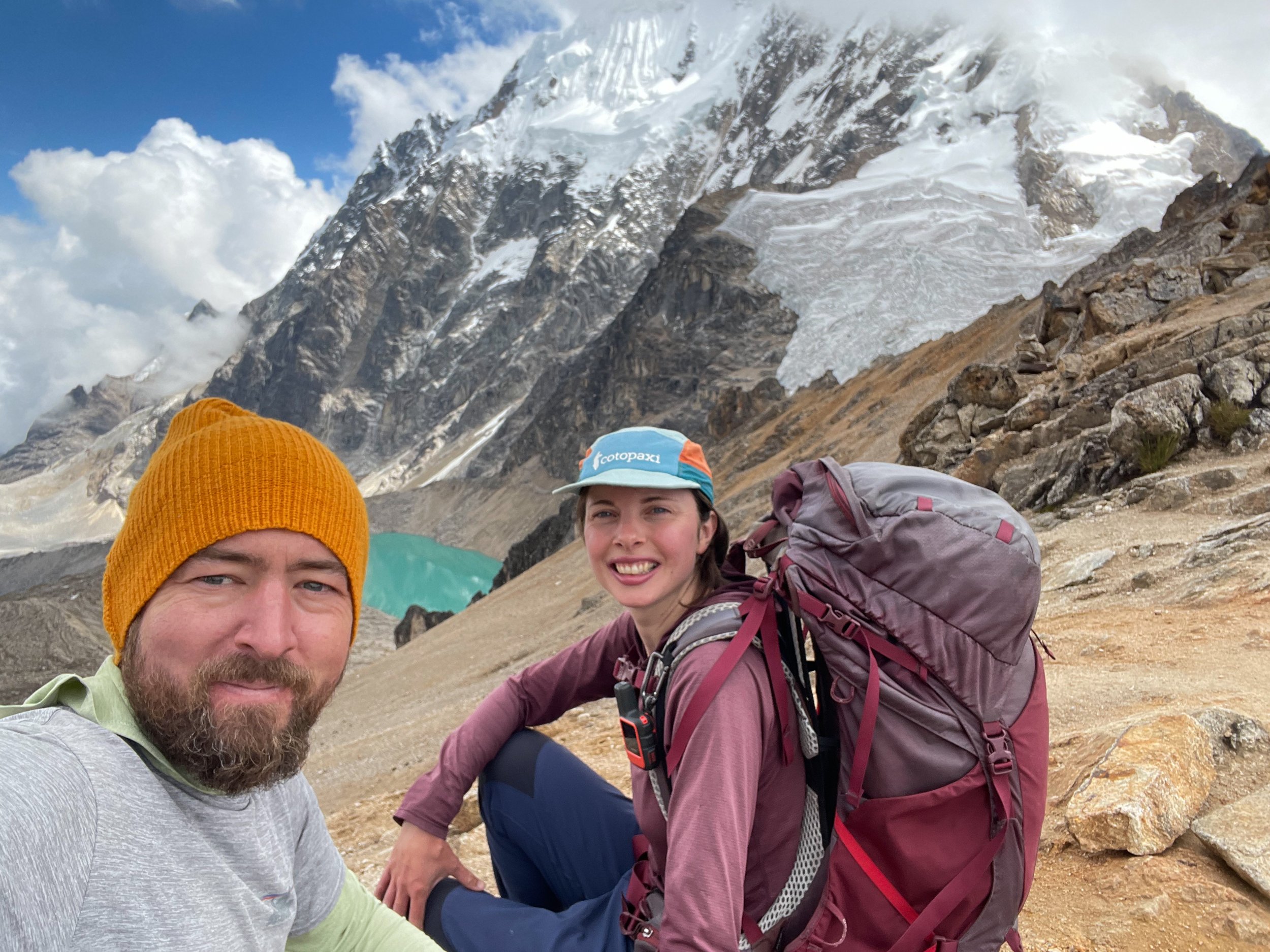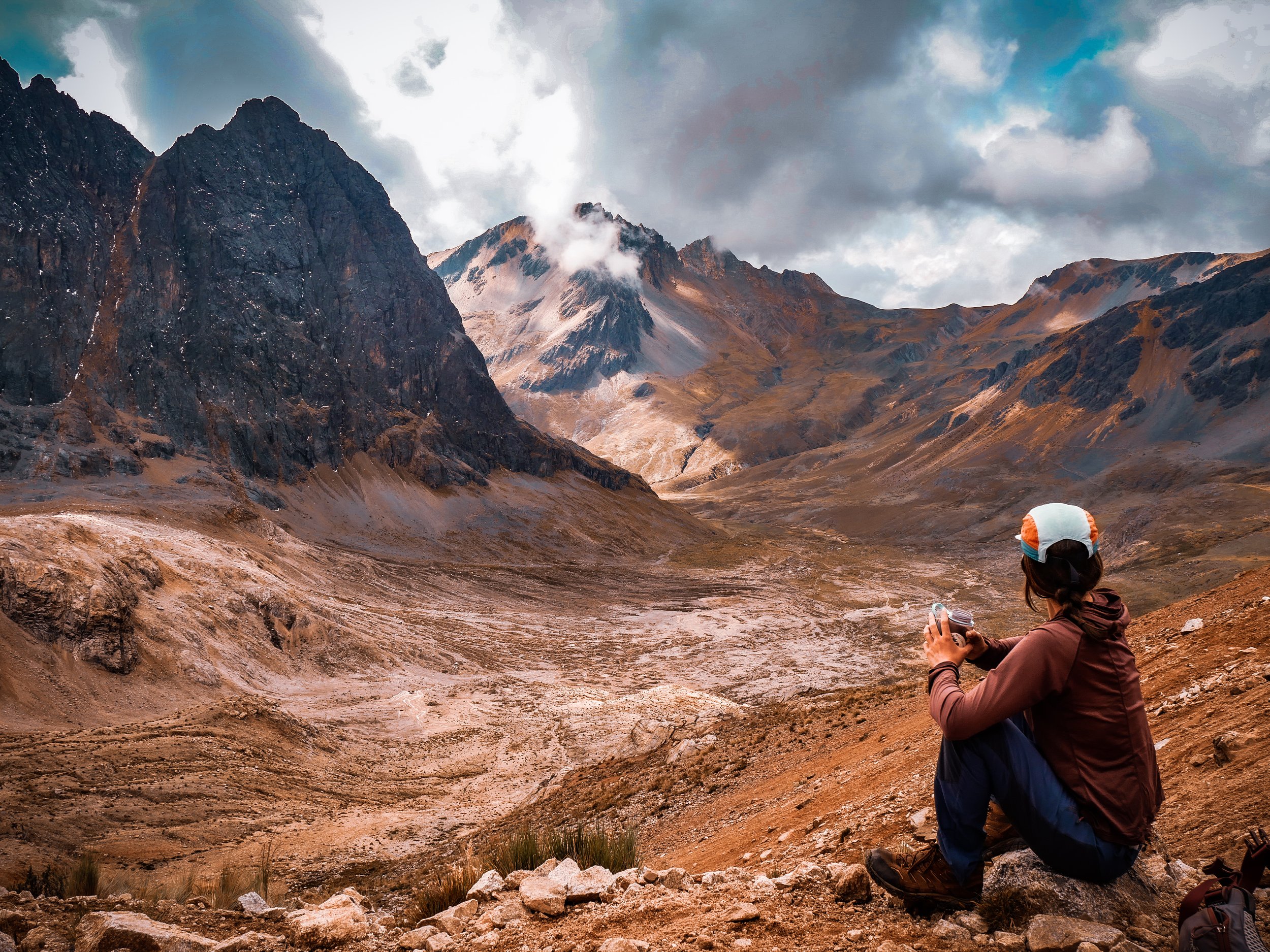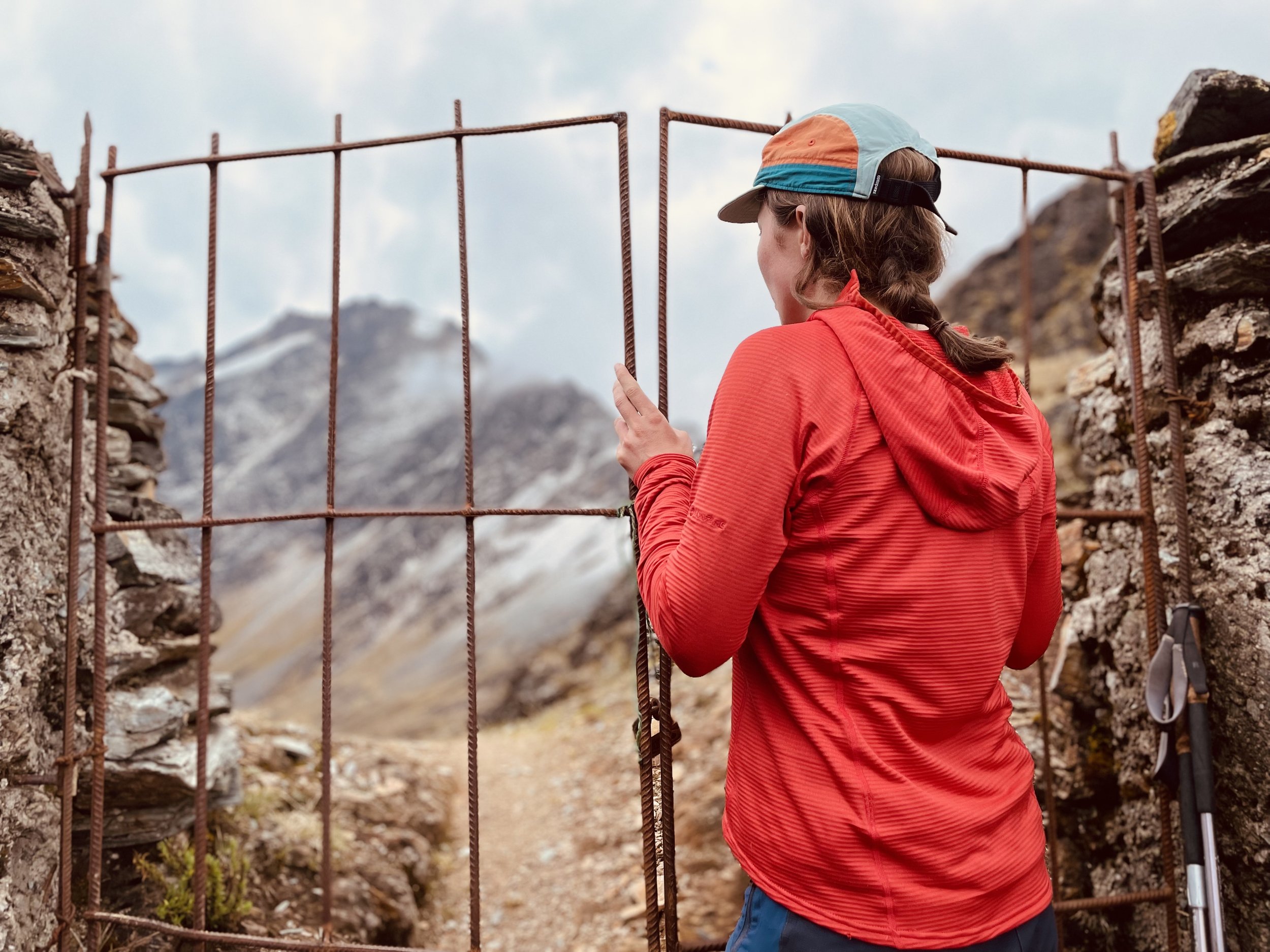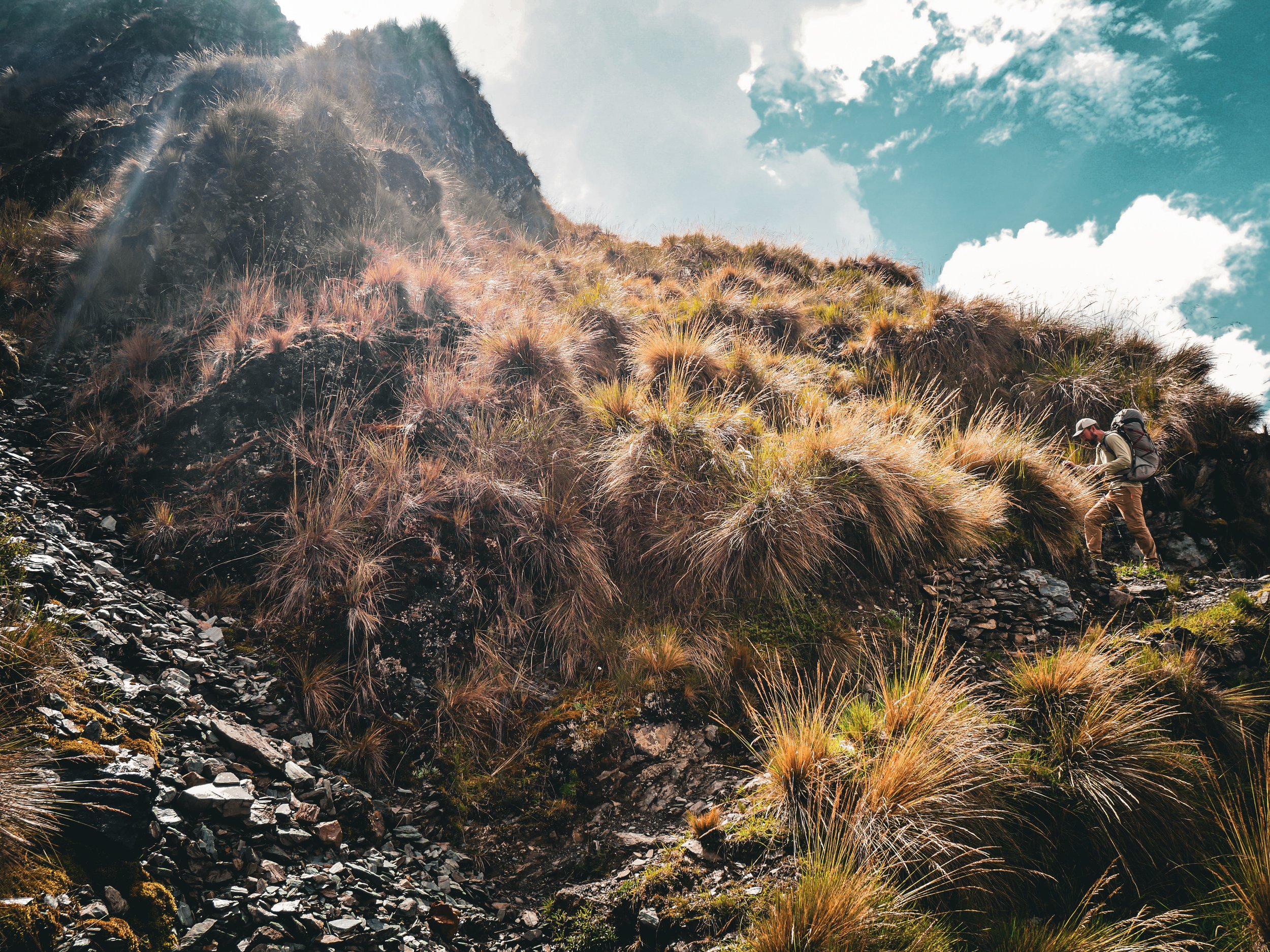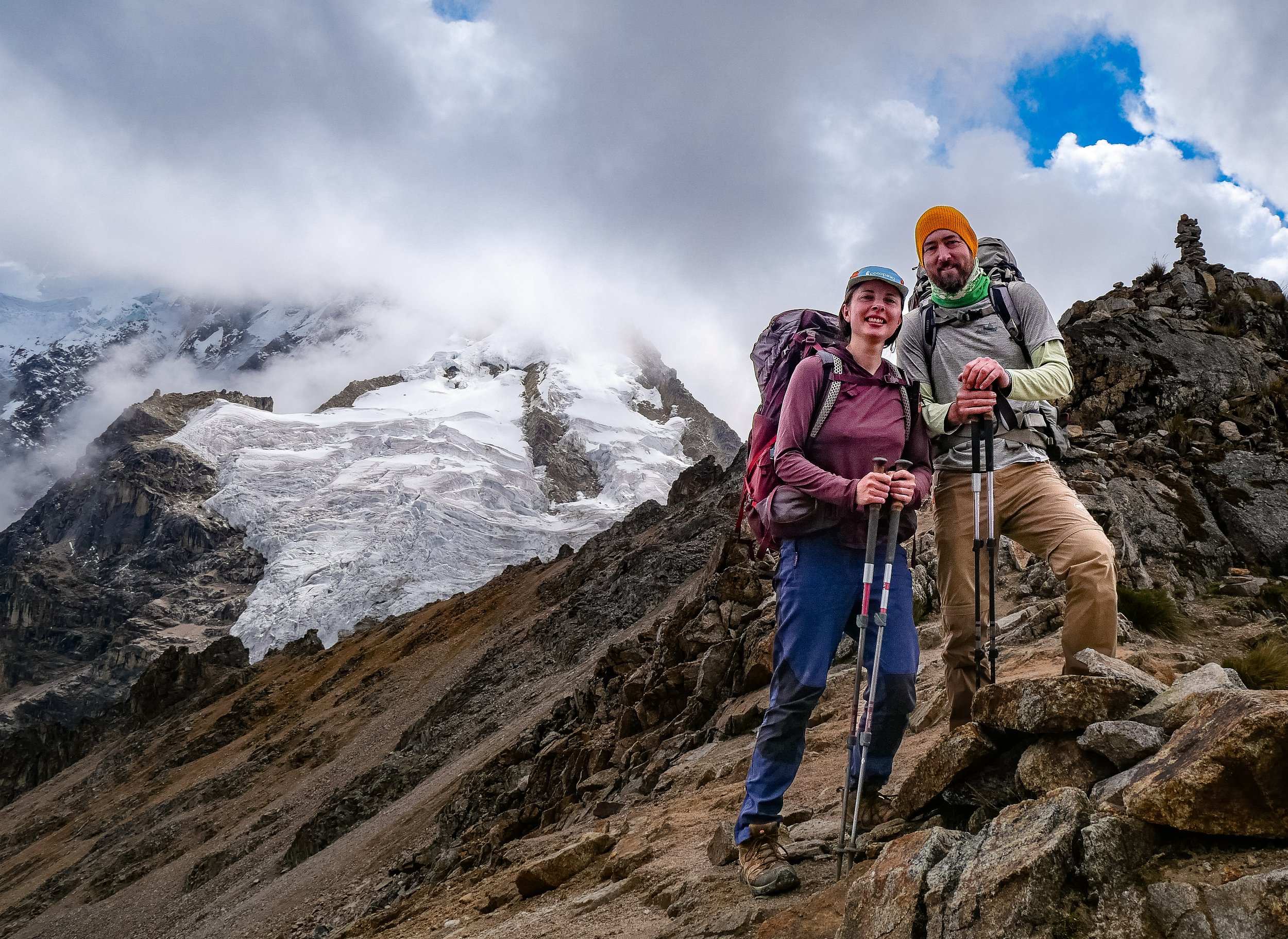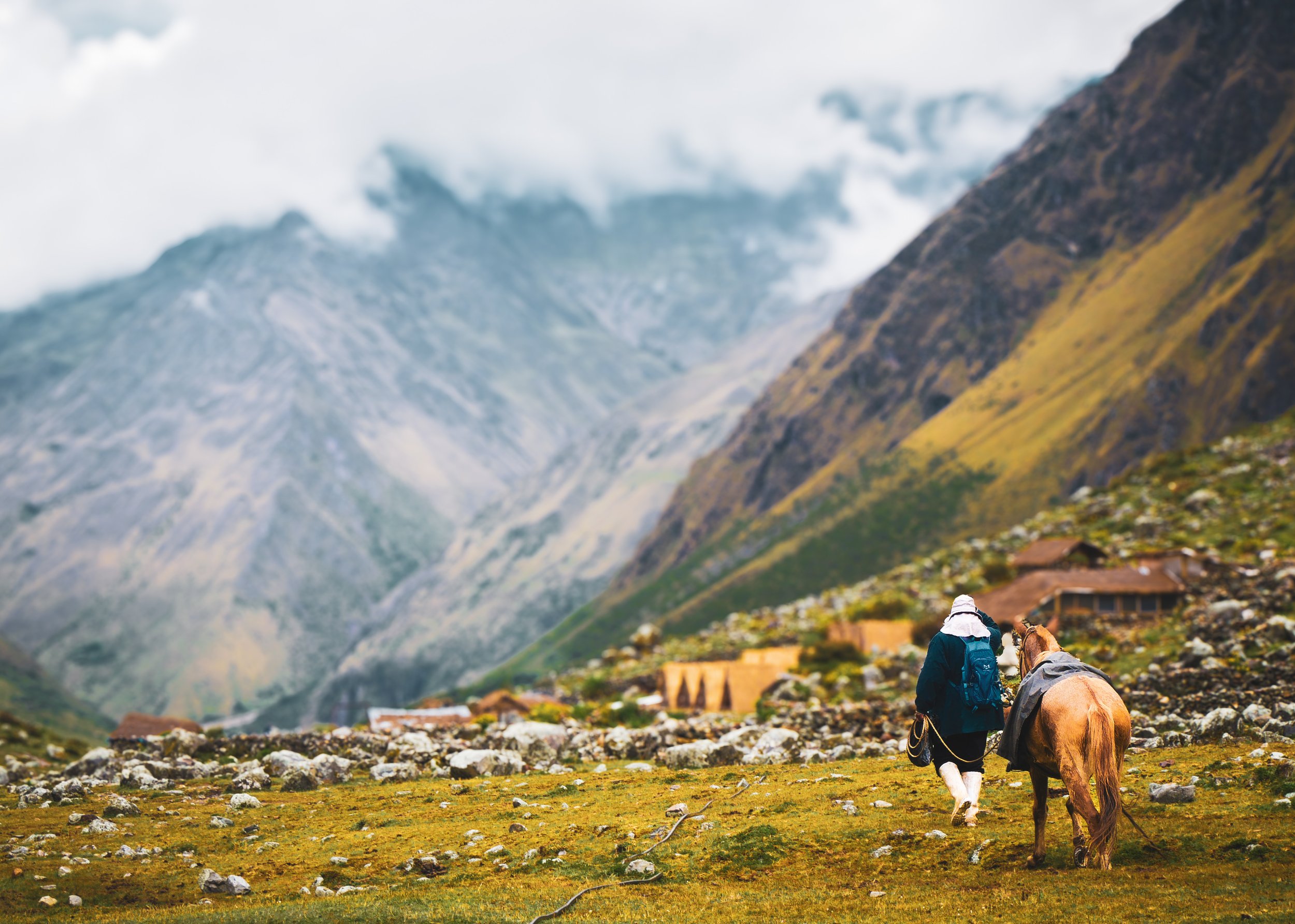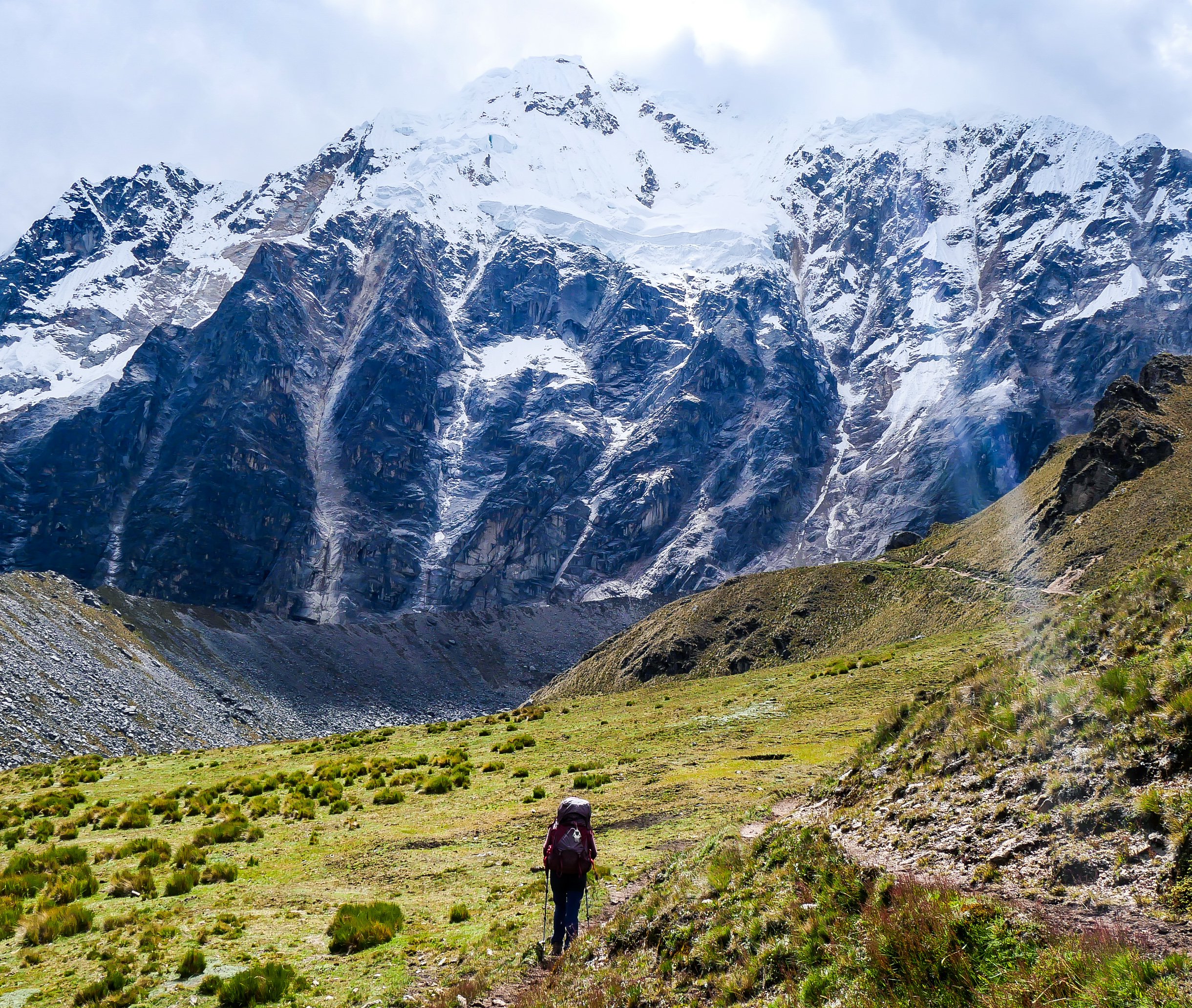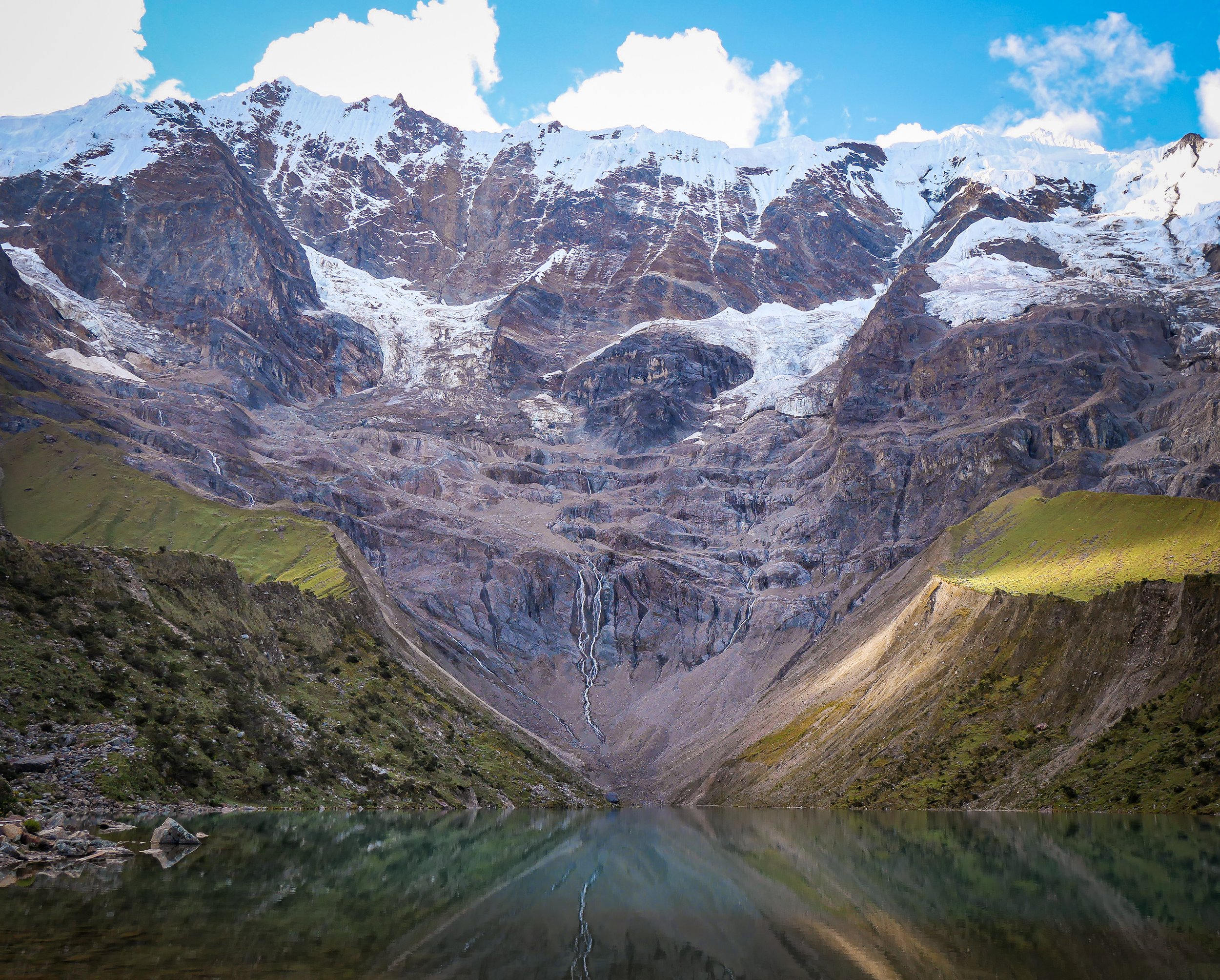
The Salkantay trail is popular with those wishing to undertake a multi-day hike to Machu Pichu. We decided to explore a different side of the mountain, away from any crowds. Our start point was the same which helped with logistics but we soon turned off and followed a different route.
Day 1: The local bus drives us three hours to the trailhead. It feels slightly safer than our Bolivian bus journeys but still manages a flat tyre. We hike into the mountains, snow capped giants standing over 6000m tall. Our first stop is the deservedly popular Humantay lake. Overweight tourists mount underweight horses that will take them up the steep climb. We’re glad of our decision to take a different route - that will start the day after. We arrive late in the afternoon, as the sun goes down the last of the people and sorry looking horses disappear and we pitch our tent. Slowly the moon comes up and reflects off the snow capped peaks, lighting up everything around us.
Day 2: We begin a slow ascent from 4250m to 5000m, Mt Salkantay looms before us at 6250m, at its base lies a brilliant turquoise lake. At this altitude oxygen availability is around half that at sea level and we take things slowly. We reach the 5000m pass, the wind whistles through and we quickly start the descent. Soon we feel the wind and rain on our backs. The rain turns to hail and the whistling wind turns to cracking thunder echoing down the valley. We take shelter a couple of times and eventually reach our campsite for the night.
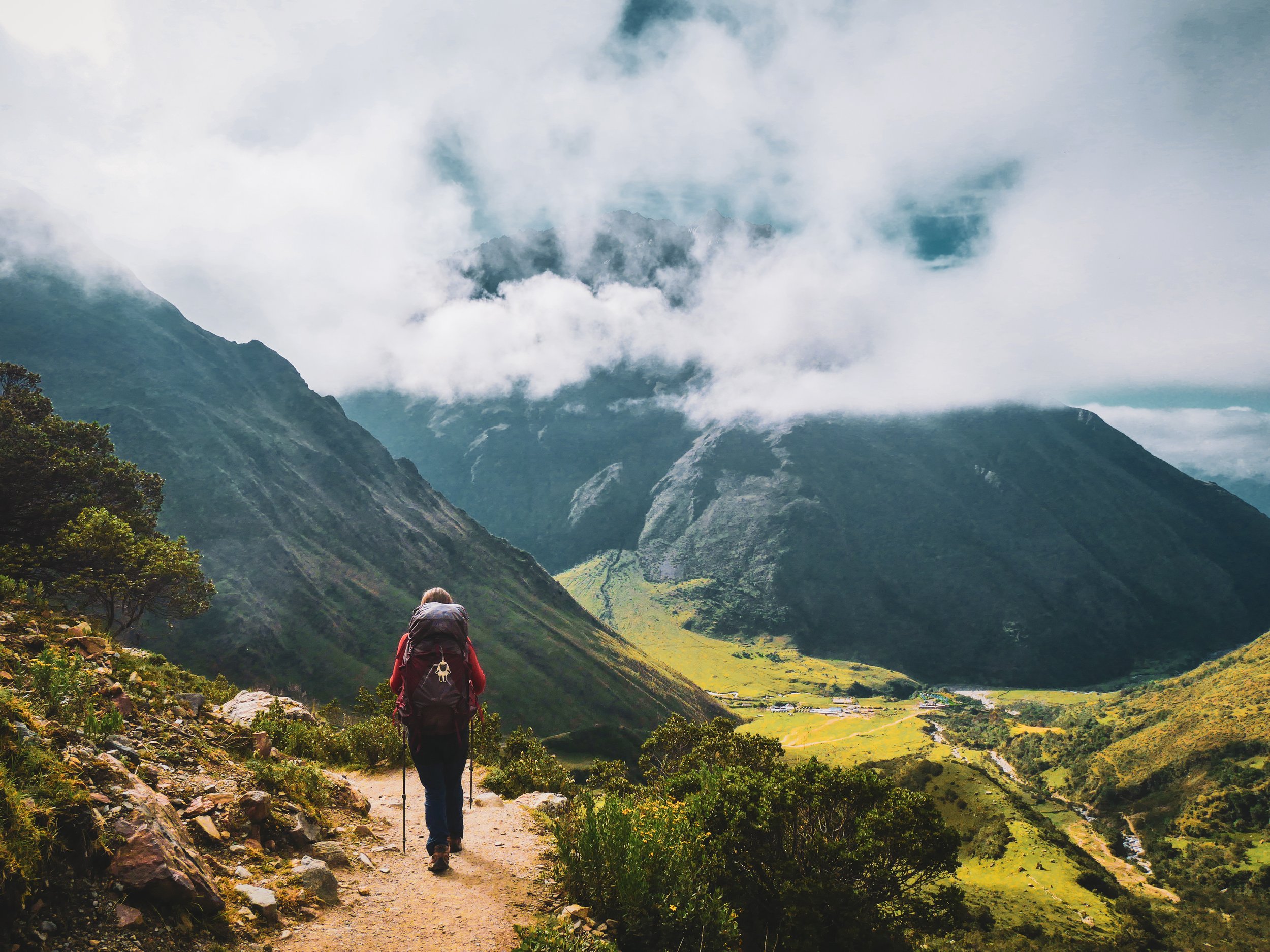
Day 3: We set out to reach a remote mountain pass that we have seen on the map. It looks steep and not at all clear whether it is accessible. However, as is often the way, as we drew closer we realised that the path was there and definitely achievable. We wound our way up, gathering altitude once more. As a passing guide later told us, this path is seldom used. We saw signs of what we think was a mountain lion, the thought of the cats using these secluded high misty mountain passes is incredible. At this time of year rain and thunderstorms typically hit each afternoon, by mid-morning, high up and close to the pass we feel rain. There is now a race to get up and back down. We leave our bags in a safe space and clamber the rest of the path in good time. At the top we find, remarkably, a locked gate. We could jump over if we had to and can only think it is here to prevent any livestock disappearing - although given the enormity of the area trying to contain anything feels futile.
Day 4: We awoke and drank our daily dose of the local altitude remedy - coca leaves in boiling water; ground down they are used to make cocaine although the effect from the leaves is subtle and arguably a placebo. We start our return journey, winding back through the valleys and up to the 5000m pass. No thunder today. That afternoon we met a local man and his horse. After conversing in Spanglish we find ourselves following him back to a campsite. Although a little unsure it turned out to be perfect, that afternoon the rain set in and we were glad of his offer. Day 5 was the slow journey back to town and a thankfully uneventful bus journey for once.


